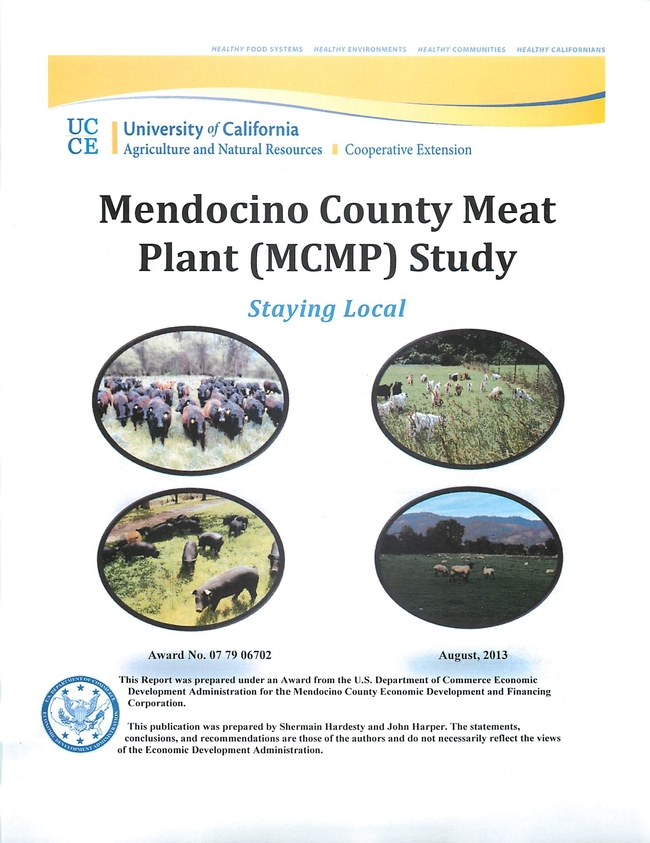
The report was prepared under an Award from the U.S. Department of Commerce Economic Development Administration for the Mendocino County EDFC. The study authors were Shermain Hardesty, Cooperative Extension Specialist, UC Davis Department of Agricultural and Resource Economics and John Harper, UCCE Livestock & Natural Resources Advisor for Mendocino & Lake Counties.
The study examined a proposed project for a small-scale multi-species USDA-inspected meat plant that would primarily serve ranchers in Mendocino and Lake Counties. The plant would handle cattle, hogs, sheep, goats and bison. It is different from most niche meat plants because most of the ranchers interested in using the facility already have established markets, primarily in the North and East Bay. Those ranchers would be shifting their harvest and/or processing from one or more existing facilities (none are located in Mendocino or Lake Counties) to the proposed meat plant.
The study and report included an Analysis of Demand for USDA-Inspected Slaughter & Processing Services; Alternative Organizational Models; Alternative Sources of Financing; Plant Requirements, Options and Siting; and Financial Analysis of Three Options.
The three plant options analyzed were: Option A - provides only cut-and-wrap services using a modular processing unit and a trailer office located in an industrial park with a total cost of $430,500; Option B - includes the same processing facility and trailer office described for Option A, plus a modular slaughter unit and adjacent holding pens located at a leased site on an unspecified ranch with a total cost of $821,100; and Option C - a built-in-place 2,400 square foot harvest and processing facility located on purchased property with a total cost of $1,425,516. All options have a capacity to handle 1,500 equivalent animal units (1 steer = 2 hogs = 2 lambs or goats) per year or 30 equivalent animal units per week. The plant would operate in a 50-week year with a single 8-hour per day shift.
All three options proved to be financially viable. Option B has the highest Internal Rate of Return (IRR) of 11.1%. Option C's IRR is 6.6% and is impacted significantly by the purchase of 3.7 acres for $483,516. Option A's IRR is 3.9% but since it is cut-and-wrap only, it does not meet the needs of the ranchers doing direct marketing. Ten-year cash flow for Option C is included in the report.
A public meeting will be held on September 5, 2013 at 5 pm in Ukiah to present the report and answer questions. The meeting will be held at the Sun House Public Meeting Room. The room is on the west side of the Grace Hudson Museum, located at 431 S. Main Street.
Next steps include that authors Hardesty and Harper will prepare a business plan for implementing Option C for the EDFC.
Author - County Director Mendocino & Lake/Livestock & Natural Resources Advisor - Emeritus